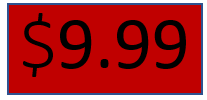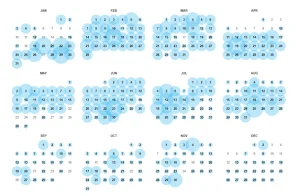- March 21, 2023
- Posted by: Seed2Exit
- Category: Mentorship Council

In this time of uncertainty and unpredictability, how can your company hit your ever-increasing revenue milestones? Most talk about how to best acquire new users or how best to retain and expand existing users, I would assert that one lever that we need to discuss more is the area of consistently evaluating price as a path to grow revenue and how that can be tied to customer acquisition and retention.
One simple way to start is to evaluate pricing on a regular basis, at least once a year if not every one or two quarters for earlier stage companies.
When you’re starting out, you might be focused on Product Market Fit (PMF) where how much you charge it is no more than a 10 min exercise. Price optimization might be thought of as a “problem that can wait.” Are you leaving money on the table or prospects picking alternatives because you are charging too much?
Price, then, can be seen as the untapped lever to drive growth. Here are two simple examples that can get you started on a larger conversation:
-
- A product is priced at $9.99 – It’s really more than $10 when you add in tax and possibly shipping if bought online, but mentally, you tell yourself, nine dollars. This is called Charm Pricing as part of a greater topic on Psychological Pricing. The vast majority of consumer products are marketed and sold in this manner. For software companies, a $19 price is almost twenty dollars, but you typically will see this as a way to motivate the user with the leading “1” in the price, that it’s a better price than leading with a “2.

- We, by nature, are adept at making comparisons. When we are presented with this example, you start in the middle, then look left and right. This is called “Center Stage” pricing where your mind is attempting to derive value associated with each price point. The user looks at each plan against their budget or affordability then attempts to see what has the best value for their money.
| $19 | $39 | $99 |
| Basic | Advanced | Premium |
| Get started with our service. Plenty of features to start being productive. | You need more, this plan has that. You’ll be singing the praises of what is in this package in no time. | This is all the features, all the perks for those who want the very best. Nothing held back. |
There are many other concepts beyond these two, but let’s just put them into practice. The calendar chart that is displayed is the Pricing Page for Shopify. The blue circles represent changes that are made to this page. The size of the circle presents more than one change on that day, presumably A/B testing in action. There were only 42 days where Shopify didn’t make any changes on their pricing page, which means, 88% of the Year, they were making changes to optimize conversion. While you might not have a dedicated resource looking at this every day, it still proves that point that even at the scale of Shopify, they continue to look for ways to grow and using Pricing as a lever.

Source: Wayback Machine
The key takeaway from all this is to derive a Value Metric approach as the way a company measures the per unit value of their product for sale. If we look at the Center Stage example, the lowest and highest price tiers is five times more. So is the value given to users at least five times aligned with the price? If we abstract the actual price and focus on creating value, it becomes easier for you to think about what you can charge and create product marketing statements on honing your messaging accordingly.
Final Thoughts
While there are many techniques that can be employed to grow your business, think of Pricing as an exercise to involve your team and one more tool to deploy that drives growth. In addition to these strategies, you may also consider IT Staff Augmentation as a way to quickly scale your team and meet your business objectives. There are many other techniques to deploy to manage new versions or enhancements to your product, along with experiments in scarcity. Create that additional growth lever and further optimize your business for scale.
